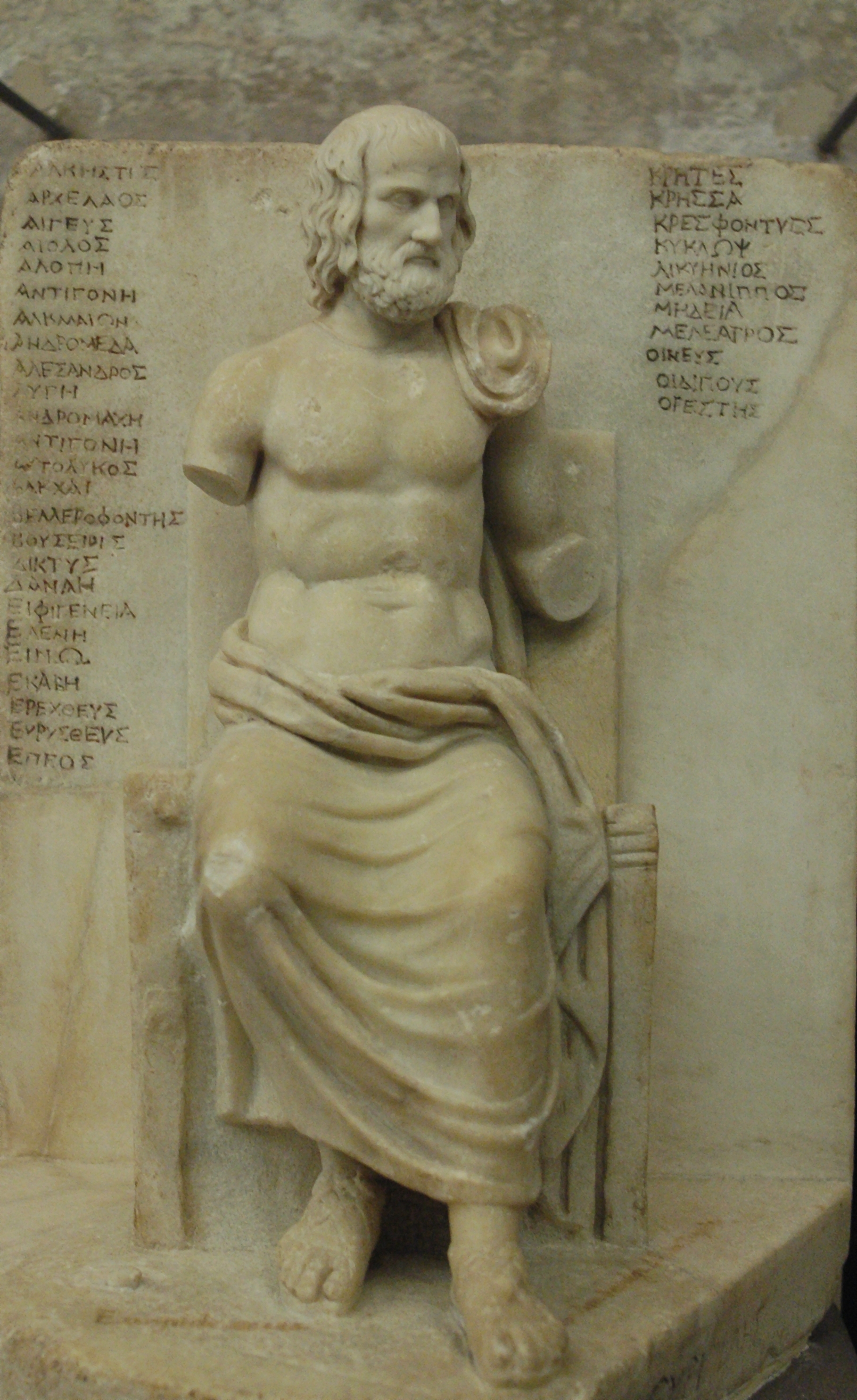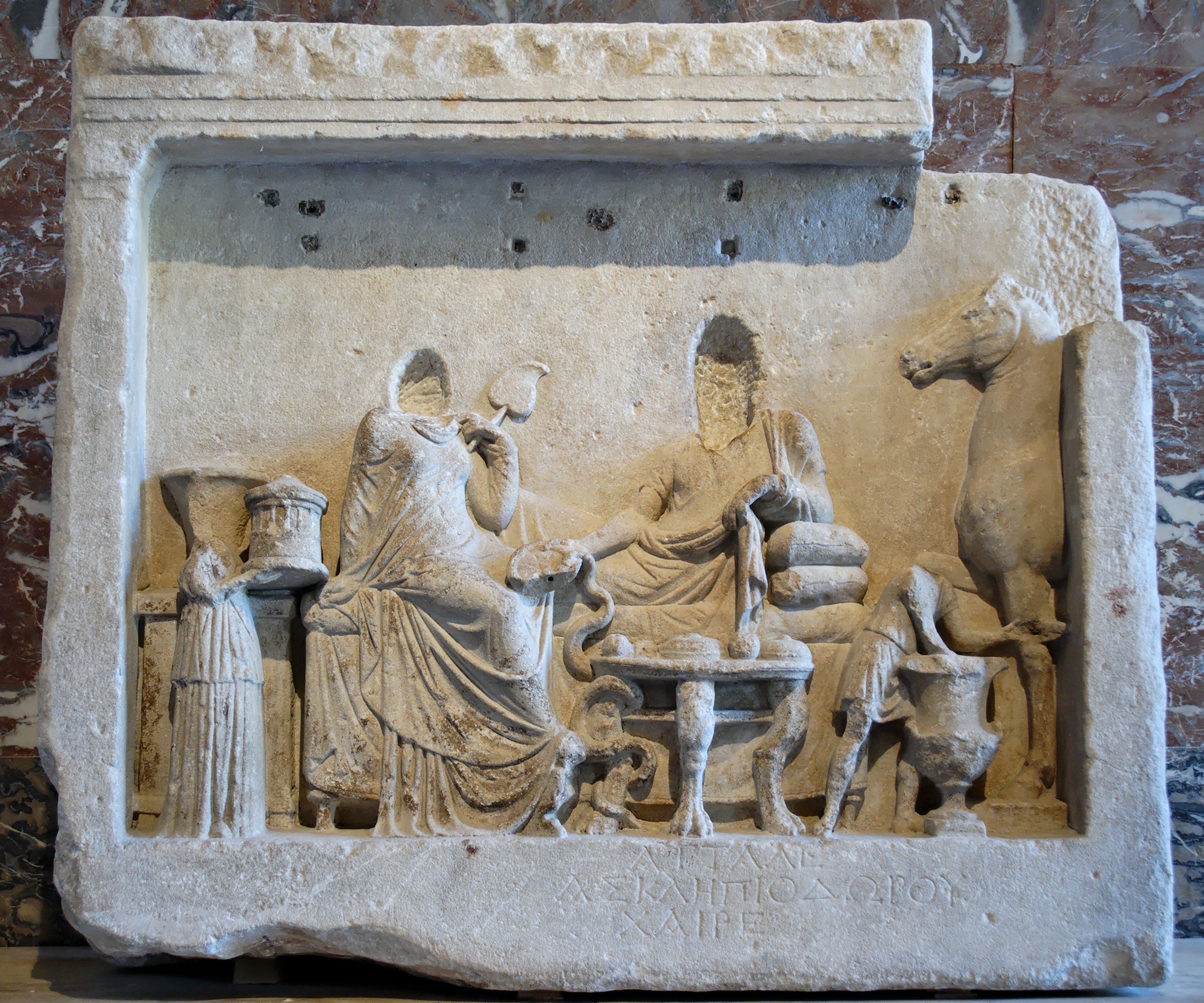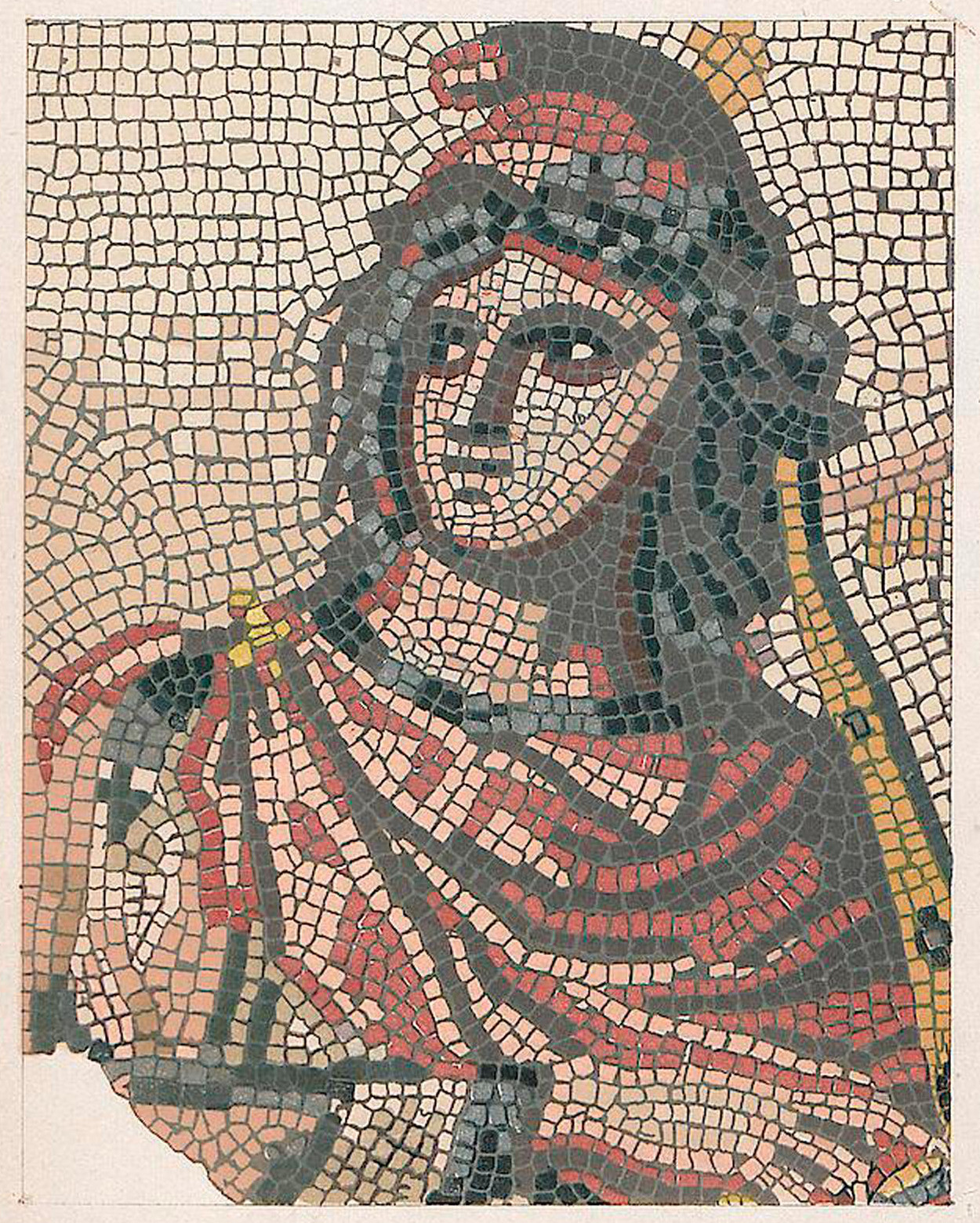|
Hypsipyle (play)
''Hypsipyle'' () is a partially preserved tragedy by Euripides, about the legend of queen Hypsipyle of Lemnos, daughter of King Thoas. It was one of his last and most elaborate plays. It was performed c. 411–407, along with ''The Phoenician Women'' which survives in full, and the lost ''Antiope''. Originally only known from a few fragments, knowledge of the play was greatly expanded with the discovery of Oxyrhynchus Papyrus 852 in 1905, and its publication by Grenfell and Hunt in 1908. Of his lost plays, it is the one with the most extensive fragments. The prologue referenced Dionysus leading a dance along Mount Parnassus. Plot The heroine of Euripides' play is Hypsipyle, the former queen of Lemnos, and lover of Jason. When the women of Lemnos killed all the men on the island, Hypsipyle had refused to kill her father Thoas, the king, and instead secretly helped him flee the island. She ruled Lemnos when Jason and the Argonauts visited the island, and she had, by Jason, ... [...More Info...] [...Related Items...] OR: [Wikipedia] [Google] [Baidu] |
Euripides
Euripides () was a Greek tragedy, tragedian of classical Athens. Along with Aeschylus and Sophocles, he is one of the three ancient Greek tragedians for whom any plays have survived in full. Some ancient scholars attributed ninety-five plays to him, but the ''Suda'' says it was ninety-two at most. Of these, eighteen or nineteen have survived more or less complete (''Rhesus (play), Rhesus'' is suspect). There are many fragments (some substantial) of most of his other plays. More of his plays have survived intact than those of Aeschylus and Sophocles together, partly because his popularity grew as theirs declinedMoses Hadas, ''Ten Plays by Euripides'', Bantam Classic (2006), Introduction, p. ixhe became, in the Hellenistic Age, a cornerstone of ancient literary education, along with Homer, Demosthenes, and Menander.L.P.E.Parker, ''Euripides: Alcestis'', Oxford University Press (2007), Introduction p. lx Euripides is identified with theatrical innovations that have profoundly influ ... [...More Info...] [...Related Items...] OR: [Wikipedia] [Google] [Baidu] |
Euneus
In Greek mythology, Euneus ( Ancient Greek: Εὔνηος) was a son of Jason and Queen Hypsipyle of Lemnos; he had a twin brother whose name is variously given as Nebrophonus, Thoas or Deipylus. Mythology The children were separated from their mother after she was exiled from the island for having spared her own father Thoas. Later, the brothers participated in the funeral games of Opheltes (Archemorus), for whose death Hypsipyle was responsible. Euneus later became King of Lemnos. According to Homer, the Greek fleet on its way to Troy, in the generation after the ''Argo'' quest, was reprovisioned and victualled at Euneus' orders. He ransomed Lycaon, a Trojan prisoner, from Patroclus for a silver urn which had been once offered as a gift to his grandfather Thoas, the king of Lemnos, by the Phoenicians. The Euneidae, a Lemnian clan of cithara-players, regarded Euneus as their ancestor.Hesychius of Alexandria, s.v. Euneidai See also * 7152 Euneus, Jovian asteroid Notes ... [...More Info...] [...Related Items...] OR: [Wikipedia] [Google] [Baidu] |
Timothy Gantz
Timothy Nolan Gantz (23 December 1945 – 20 January 2004) was an American classical scholar and the author of ''Early Greek Myth: A Guide to Literary and Artistic Sources''. Education and career Gantz received his Bachelor of Arts from Haverford College in 1967, and his Ph.D. in Classics from Princeton University in 1970. From 1970, Gantz was a long-time professor of classics at the University of Georgia, where he directed its "Studies Abroad in Rome" program from 1985 to 2003. ''Early Greek Myth'' In 1993, he published his book ''Early Greek Myth: A Guide to Literary and Artistic Sources'', a compendium of Greek mythology and its sources, which puts particular emphasis on earlier sources of the Archaic period. The work's stated purpose was to study Greek myths with particular consideration for the surviving ancient sources we have for them, and for how the authors and artists who produced these sources may have themselves conceived of Greek myth. The book was received positive ... [...More Info...] [...Related Items...] OR: [Wikipedia] [Google] [Baidu] |
Harvard University Press
Harvard University Press (HUP) is an academic publishing house established on January 13, 1913, as a division of Harvard University. It is a member of the Association of University Presses. Its director since 2017 is George Andreou. The press maintains offices in Cambridge, Massachusetts, near Harvard Square, and in London, England. The press co-founded the distributor TriLiteral LLC with MIT Press and Yale University Press. TriLiteral was sold to LSC Communications in 2018. Notable authors published by HUP include Eudora Welty, Walter Benjamin, E. O. Wilson, John Rawls, Emily Dickinson, Stephen Jay Gould, Helen Vendler, Carol Gilligan, Amartya Sen, David Blight, Martha Nussbaum, and Thomas Piketty. The Display Room in Harvard Square, dedicated to selling HUP publications, closed on June 17, 2009. Related publishers, imprints, and series HUP owns the Belknap Press imprint (trade name), imprint, which it inaugurated in May 1954 with the publication of the ''Harvard Guide to ... [...More Info...] [...Related Items...] OR: [Wikipedia] [Google] [Baidu] |
Loeb Classical Library
The Loeb Classical Library (LCL; named after James Loeb; , ) is a monographic series of books originally published by Heinemann and since 1934 by Harvard University Press. It has bilingual editions of ancient Greek and Latin literature, with the original Greek or Latin text on the left-hand page and a fairly literal translation on the facing page. History Under the inspiration drawn from the book series specializing in publishing classical texts exclusively in the original languages, such as the Bibliotheca Teubneriana, established in 1849 or the Oxford Classical Texts book series, founded in 1894, the Loeb Classical Library was conceived and initially funded by the Jewish-German-American banker and philanthropist James Loeb (1867–1933). The first volumes were edited by Thomas Ethelbert Page, W. H. D. Rouse, and Edward Capps, and published by William Heinemann, Ltd. (London) in 1912, already in their distinctive green (for Greek text) and red (for Latin) hardco ... [...More Info...] [...Related Items...] OR: [Wikipedia] [Google] [Baidu] |
Greek Anthology
The ''Greek Anthology'' () is a collection of poems, mostly epigrams, that span the Classical Greece, Classical and Byzantine periods of Greek literature. Most of the material of the ''Greek Anthology'' comes from two manuscripts, the ''Palatine Anthology'' of the 10th century and the ''Anthology of Planudes'' (or ''Planudean Anthology'') of the 14th century.: Explanatory text for the book of W. R. Paton entitled "The Greek Anthology with an English Translation" (1916), the same text is also at the introduction in page http://www.ancientlibrary.com/greek-anthology/ before the facsimile copy of the pages of the same book The earliest known anthology in Greek was compiled by Meleager of Gadara in the first century BC, under the title ''Anthologia'', or "Flower-gathering." It contained poems by the compiler himself and forty-six other poets, including Archilochus, Alcaeus of Mytilene, Alcaeus, Anacreon, and Simonides of Ceos, Simonides. In his preface to his collection, Meleag ... [...More Info...] [...Related Items...] OR: [Wikipedia] [Google] [Baidu] |
Cyzicus
Cyzicus ( ; ; ) was an ancient Greek town in Mysia in Anatolia in the current Balıkesir Province of Turkey. It was located on the shoreward side of the present Kapıdağ Peninsula (the classical Arctonnesus), a tombolo which is said to have originally been an island in the Sea of Marmara only to be connected to the mainland in historic times either by artificial means or an earthquake. The site of Cyzicus, located on the Erdek and Bandırma roads, is protected by Turkey's Turkish Ministry of Culture, Ministry of Culture. History Ancient The city was said to have been founded by Pelasgians from Thessaly, according to tradition at the coming of the Argonauts; later it received many colonies from Miletus, allegedly in 756 BC, but its importance began near the end of the Peloponnesian War when the conflict centered on the sea routes connecting Greece to the Black Sea. At this time, the cities of Athens and Miletus diminished in importance while Cyzicus began to prosper. Co ... [...More Info...] [...Related Items...] OR: [Wikipedia] [Google] [Baidu] |
Palatine Anthology
The ''Palatine Anthology'' (or ''Anthologia Palatina''), sometimes abbreviated ''AP'', is the collection of Greek poems and epigrams discovered in 1606 in the Palatine Library in Heidelberg. It is based on the lost collection of Constantine Kephalas of the 10th century, which in turn is based on older anthologies. It contains material from the 7th century BC until 600 AD and later on was the main part of the ''Greek Anthology'' which also included the '' Anthology of Planudes'' "The Greek Anthology as we have it today consists of the fifteen Books of the Palatine Anthology followed by a 'Planudean Appendix' of 388 poems occurring in Planudes but not in the Palatine manuscript..." and more material. The manuscript of the ''Palatine Anthology'' was discovered by Saumaise (Salmasius) in 1606 in the Palatine library at Heidelberg (Codex Palatinus 23). In 1623, after the Thirty Years' War, it was sent with the rest of the Palatine Library to Rome as a present from Maximilian I of B ... [...More Info...] [...Related Items...] OR: [Wikipedia] [Google] [Baidu] |
Cyzicene Epigrams
The Cyzicene epigrams are a collection of nineteen numbered Greek epigrams, each accompanied by a short prose preamble, which, together with a one-sentence introduction, constitute the third and shortest book of the ''Palatine Anthology''. The epigrams are supposed to have been inscribed somewhere on the columns of the Temple of Apollonis at Cyzicus, a monument which no longer exists. Apollonis was the wife and queen of Attalus I, first king of Pergamon. When she died in the mid-second century BC, two of her sons, Eumenes and Attalus, built a temple in Apollonis' home town of Cyzicus, and dedicated it to her. According to the one-sentence introduction, each epigram was, apparently, a kind of subtitle for a relief decorating each column of the temple, illustrating a scene from Greek mythology. The prose preamble, taking the place of the carved image, provides a description of it. As befitting a temple built by sons to honor their mother, the preambles describe scenes of love betwee ... [...More Info...] [...Related Items...] OR: [Wikipedia] [Google] [Baidu] |
Second Vatican Mythographer
The so-called Vatican Mythographers () are the anonymous authors of three Latin mythographical texts found together in a single medieval manuscript, Vatican Reg. lat. 1401. The name is that used by Angelo Mai when he published the first edition of the works in 1831. The text of the First Vatican Mythographer is found only in the Vatican manuscript; the second and third texts are found separately in other manuscripts, leading scholars to refer to a Second Vatican Mythographer and a Third Vatican Mythographer. Content Taken together, the works of the Vatican Mythographers provided a source-book of Greek and Roman myths and their iconography throughout the Middle Ages and the Renaissance. The texts, which were being copied in manuscripts as late as the 15th century, were parsed allegorically to provide Christianized moral and theological implications, "until in time the pagan divinities blossomed into full-fledged vices and virtues". Their '' testimonia'', sources, and parallel ... [...More Info...] [...Related Items...] OR: [Wikipedia] [Google] [Baidu] |
Thrace
Thrace (, ; ; ; ) is a geographical and historical region in Southeast Europe roughly corresponding to the province of Thrace in the Roman Empire. Bounded by the Balkan Mountains to the north, the Aegean Sea to the south, and the Black Sea to the east, it comprises present-day southeastern Bulgaria (Northern Thrace), northeastern Greece (Western Thrace), and the European part of Turkey (East Thrace). Lands also inhabited by ancient Thracians extended in the north to modern-day Northern Bulgaria and Romania and to the west into Macedonia (region), Macedonia. Etymology The word ''Thrace'', from ancient Greek ''Thrake'' (Θρᾴκη), referred originally to the Thracians (ancient Greek ''Thrakes'' Θρᾷκες), an ancient people inhabiting Southeast Europe. The name ''Europe'' (ancient Greek Εὐρώπη), also at first referred to this region, before that term expanded to include its Europe, modern sense. It has been suggested that the name ''Thrace'' derives from the na ... [...More Info...] [...Related Items...] OR: [Wikipedia] [Google] [Baidu] |
Orpheus
In Greek mythology, Orpheus (; , classical pronunciation: ) was a Thracians, Thracian bard, legendary musician and prophet. He was also a renowned Ancient Greek poetry, poet and, according to legend, travelled with Jason and the Argonauts in search of the Golden Fleece, and descended into the Greek underworld, underworld to recover his lost wife, Eurydice. The major stories about him are centered on his ability to charm all living things and even stones with his music (the usual scene in Orpheus mosaics), his attempt to retrieve his wife Eurydice from the underworld, and his death at the hands of the maenads of Dionysus, who got tired of his mourning for his late wife Eurydice. As an archetype of the inspired singer, Orpheus is one of the most significant figures in the classical reception studies, reception of classical mythology in Western culture, portrayed or allusion, alluded to in countless forms of art and popular culture including poetry, film, opera, music, and painting ... [...More Info...] [...Related Items...] OR: [Wikipedia] [Google] [Baidu] |





